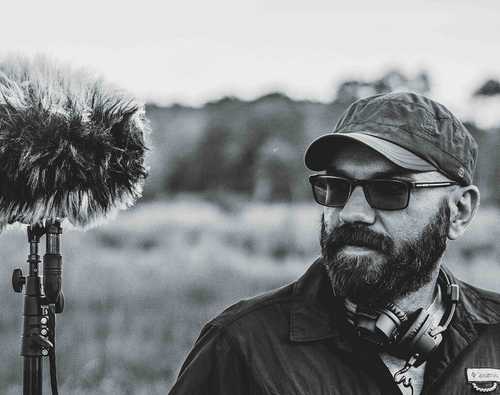
How long is a dawn chorus? How about a thunderstorm? Can you capture the essence of a soundscape in a few minutes, or do you need more than that to accurately portray such natural phenomena? Does it matter if you only listen for a few seconds or minutes? Important questions worth exploring.
Background
I’ve been recording natural soundscapes for about 15 years, and before that I’ve been paying attention to them for close to four decades. Some of my most cherished childhood memories are related to sounds and biophony, and active listening has always been a part of my life.
Having said that, when I got my first sound recorder around 2010 I only recorded short snippets here and there for quite a while. Most of my recordings from that time are five to 15 seconds in length. When I go back and listen to those files, I am surprised and frustrated with myself, because there are some nice gems in there but they don’t give you enough time to understand what you’re listening to.
This is by no means a unique experience. I’ve seen it happen time and time again – someone learns about field recording, gets their hands on some equipment, and the recordings they capture are mostly short snippets. This can be caused by impatience, or by the effects of our visually-focused, scroll-happy culture. What’s certain is that long-form recording (and listening) requires a serious change of mindset.
Recording sounds and soundscapes
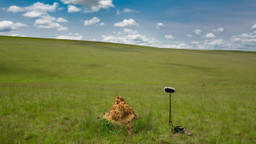
One of the main subjects of my early recording years was dawn choruses. I would wake up at 3am, drive to the outskirts of Iași, Romania, or Edinburgh, Scotland, set up a recording rig in the dark, and lay 100m of cable back to my car. This allowed me to monitor what I was capturing, and of course to record continuously for a few hours.
Initially I was worried about the amount of data I was collecting, and about the time it would take to listen, edit and manage it. As I did more and more of these sessions, I realised how much information and audio content I was missing by only recording for a few minutes at a time. That’s when I realised that it’s preferable to have file size and storage issues rather than failing to record good soundscapes.
Another phenomenon I find very interesting for sound recording is thunderstorms. While in some places you can pinpoint the moments that a thunderstorm starts and ends (or moves in and out of hearing range), in others this is much more fuzzy. A few years ago I was in the Javari valley of the Amazon rainforest, and I spent a whole day watching a thunderstorm circle our little hut, just within hearing range. When it eventually hit, the sun had set and it came with a massive light show and a huge downpour. I had several rigs recording at various distances from camp, and looking back at those recordings I can say I recorded a 12 hour+ thunderstorm on that day, with no clear beginning or end.
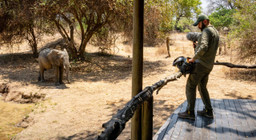
Lastly, how about animal calls? With some animals it’s very easy to tell when their call starts and when it stops. Think about a series of lion roars, a wren’s song or the drumming of a woodpecker. Other species make more complex and much longer sounds, though. Black-and-white colobus monkeys call for tens of minutes at dawn, while a humpback whale’s song can take hours. Some insects can call all night long.
Of course there are many more sounds and soundscapes I could include here, like wind, rain, glaciers moving, volcanoes erupting etc. Can you realistically say that you’ve captured these sounds if you only record for a few minutes?
My approach is to use drop rigs and to record for at least a full day/night cycle where possible. While this might be too much for some applications, it is an excellent way to observe the ebb and flow of biophony. You are guaranteed to capture a full dawn chorus this way, no matter how long. Moreover, it’s much easier to retrospectively look at a waveform and/or spectrogram and to select the beginning and end of a certain natural phenomenon than to try and piece together something from several short recordings. Even if you have to choose a small excerpt, it’s easier done when you have so much material to work with.
Once you get out of the short-snippet mindset, there is a lot to discover. It might not be as exciting as moving around every few minutes and finding new and shiny things to point your mics at, but it allows a much deeper glimpse into the ecology of a space.
Listening to soundscape recordings
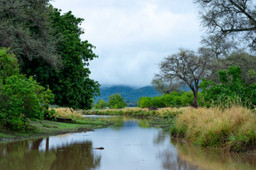
It’s no secret that listening to nature sounds and immersing yourself in nature is beneficial. Many studies have shown this, but I don’t know of any research that has focused on the minimum amount of listening that you need to do for this to be effective. Having said that, there has to be a sweet spot somewhere between one microsecond and 100% of your time spent listening.
Without going into too much detail, natural soundscapes have this effect on us because they have been the soundtrack to our ancestors’ lives for aeons. Proto-humans which evolved on the African savanna would hear birdsong, soft wind, rain, thunderstorms etc. every day of their lives, and these would signal ‘business as usual’ to their ears.
In the last hundred years or so, natural sounds have been replaced by traffic, aircraft, combustion engines, alarms and other anthropogenic noise. There might be some birdsong included, but unfortunately it’s often drowned out. This ‘new’ and grating element in our soundscape is perceived by our auditory cortex as a continuous cause of stress, because of its harsh and relatively novel nature.
Listening to nature soundscapes for 10 minutes a day (while blocking out or dampening anthropogenic noise) is a great step, but probably not enough to reverse the damage and stress that urban anthropophony is causing. One hour a day might be better, more hours even more so.
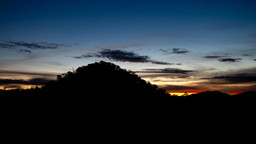
In my experience, two hours of exposure to nature sounds per day is a good middle ground. I like to wake up to the sounds of a lively dawn chorus, and in the evening I spend at least one hour reading while listening to the sounds of soft wind or a thunderstorm. During the daytime I like to take breaks and to reset my ears, especially if I’ve been doing work that requires a lot of conscious listening.
Brief, shallow experiences have their place, and a quick 10-minute break from the chaos of urban life is very welcome if that’s all your time allows for. But once you’ve made a habit of this, it’s worth exploring longer and more immersive experiences.
Listening for longer might also be an antidote to our stimulus-rich but fractured lives. Sometimes I spend an entire day switching from small task to small task, constantly being bombarded with notifications and requests, shifting focus and mindset quickly. I will be completely drained at the end of such a day, even though I’ve been mostly sat at my desk. The best antidote I’ve found is listening to nature sounds for a while, ideally while walking but even while reading a book or just lying on the sofa with my cat.
Lastly, and this is purely subjective, listening to a short snippet of something (dawn chorus, thunderstorm etc.) makes me feel a bit uneasy, like reading a book only halfway through. I need this experience to develop naturally and to last for a while before I can consider it complete.
Enjoy, and happy listening!
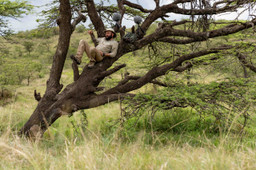
All photos courtesy of George Vlad
🎧 Listen to George Vlad’s recordings on earth.fm
Earth.fm is a completely free streaming service of 1000+ nature sounds from around the world, offering natural soundscapes and guided meditations for people who wish to listen to nature, relax, and become more connected. Launched in 2022, Earth.fm is a non-profit and a 1% for the Planet Environmental Partner.
Check out our recordings of nature ambience from sound recordists and artists spanning the globe, our thematic playlists of immersive soundscapes and our Wind Is the Original Radio podcast.
You can join the Earth.fm family by signing up for our newsletter of weekly inspiration for your precious ears, or become a member to enjoy the extra Earth.fm features and goodies and support us on our mission.
Subscription fees contribute to growing our library of authentic nature sounds, research into topics like noise pollution and the connection between nature and mental wellbeing, as well as funding grants that support emerging nature sound recordists from underprivileged communities.
